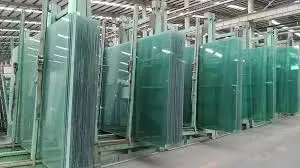Embracing Transparent Glass Design A Fusion of Aesthetics and Functionality
In an era where the interplay between nature and architecture is increasingly sought after, transparent glass design has emerged as a leading trend in modern architecture and interior design. This design philosophy champions the use of glass as a primary material, allowing natural light to flood indoor spaces while providing breathtaking views of the surrounding environment. The allure of transparent glass lies not only in its beauty but also in its ability to create harmonious living and working environments.
The Aesthetic Appeal of Transparent Glass
One of the most compelling features of transparent glass design is its aesthetic appeal. Glass facades, expansive windows, and glass walls create a sense of openness and tranquility that is difficult to achieve with traditional building materials. The seamless transition between interior and exterior spaces fosters a feeling of connectivity with nature, inviting the outdoors into our daily lives.
From sleek skyscrapers glistening in urban skylines to serene residential homes nestled in lush landscapes, glass is versatile enough to cater to various architectural styles. The minimalist aesthetic that transparent glass provides enhances the visual lightness of structures, making them appear elegant and contemporary. Architects and designers are increasingly drawn to the challenge of integrating glass creatively into their projects, crafting designs that are both visually striking and functionally sound.
Functionality and Innovation
Beyond aesthetics, transparent glass design also offers significant functional advantages
. For instance, the use of glass in commercial spaces enhances visibility, creating an inviting atmosphere that attracts customers. Natural light, which has been shown to improve mood and productivity, reduces the need for artificial lighting, thereby lowering energy costs in both residential and commercial settings. Smart glazing technologies, such as electrochromic glass that can change opacity with the flick of a switch, offer solutions to regulate heat and light, further enhancing energy efficiency.
Moreover, transparent glass can be engineered to meet various safety and performance standards. Laminated and tempered glass provide durability and strength, ensuring that aesthetic choices do not compromise safety. As technology advances, innovations like self-cleaning and energy-generating glass are becoming more prevalent, broadening the scope of possibilities in transparent glass design.
transparent glass design
Sustainability in Design
The quest for sustainability has become a central theme in contemporary architectural practices, and transparent glass design plays a crucial role in this movement. The use of glass allows for optimized daylighting, reducing dependence on artificial lighting and the associated energy consumption. Moreover, advancements in low-emissivity (Low-E) coatings on glass can help maintain interior temperatures, significantly reducing heating and cooling costs.
Many modern architects are incorporating biophilic design principles, which emphasize human connections to nature. Transparent glass structures not only invite natural elements into urban and suburban contexts but often utilize environmentally friendly materials and sustainable building practices. By prioritizing sustainability, architects and designers can create spaces that promote well-being while minimizing their environmental impact.
Challenges and Considerations
Despite its numerous advantages, the use of transparent glass in design comes with challenges. Privacy concerns are prominent in both residential and commercial settings; however, creative design solutions, like strategically placed screens, landscaped barriers, or frosted glass, can effectively address these issues. Furthermore, climate considerations must be taken into account, as excessive heat gain or loss through glass can lead to increased energy costs. Careful selection of glass type and building orientation can mitigate these effects, ensuring that the benefits of transparent glass design are fully realized.
Conclusion
Transparent glass design is more than just a passing trend; it represents a fundamental shift in how we perceive and interact with our built environment. By merging aesthetics with functionality and sustainability, architects and designers are creating spaces that inspire, energize, and connect us to the world around us. As we continue to explore and embrace transparent glass in our architectural endeavors, we pave the way for a future where design is not only about shelter but also about enhancing our quality of life. The transparency of glass serves as a metaphor for the clarity and openness we seek in our lives, making it a timeless element in the narrative of architectural evolution.
 Afrikaans
Afrikaans  Albanian
Albanian  Amharic
Amharic  Arabic
Arabic  Armenian
Armenian  Azerbaijani
Azerbaijani  Basque
Basque  Belarusian
Belarusian  Bengali
Bengali  Bosnian
Bosnian  Bulgarian
Bulgarian  Catalan
Catalan  Cebuano
Cebuano  Corsican
Corsican  Croatian
Croatian  Czech
Czech  Danish
Danish  Dutch
Dutch  English
English  Esperanto
Esperanto  Estonian
Estonian  Finnish
Finnish  French
French  Frisian
Frisian  Galician
Galician  Georgian
Georgian  German
German  Greek
Greek  Gujarati
Gujarati  Haitian Creole
Haitian Creole  hausa
hausa  hawaiian
hawaiian  Hebrew
Hebrew  Hindi
Hindi  Miao
Miao  Hungarian
Hungarian  Icelandic
Icelandic  igbo
igbo  Indonesian
Indonesian  irish
irish  Italian
Italian  Japanese
Japanese  Javanese
Javanese  Kannada
Kannada  kazakh
kazakh  Khmer
Khmer  Rwandese
Rwandese  Korean
Korean  Kurdish
Kurdish  Kyrgyz
Kyrgyz  Lao
Lao  Latin
Latin  Latvian
Latvian  Lithuanian
Lithuanian  Luxembourgish
Luxembourgish  Macedonian
Macedonian  Malgashi
Malgashi  Malay
Malay  Malayalam
Malayalam  Maltese
Maltese  Maori
Maori  Marathi
Marathi  Mongolian
Mongolian  Myanmar
Myanmar  Nepali
Nepali  Norwegian
Norwegian  Norwegian
Norwegian  Occitan
Occitan  Pashto
Pashto  Persian
Persian  Polish
Polish  Portuguese
Portuguese  Punjabi
Punjabi  Romanian
Romanian  Russian
Russian  Samoan
Samoan  Scottish Gaelic
Scottish Gaelic  Serbian
Serbian  Sesotho
Sesotho  Shona
Shona  Sindhi
Sindhi  Sinhala
Sinhala  Slovak
Slovak  Slovenian
Slovenian  Somali
Somali  Spanish
Spanish  Sundanese
Sundanese  Swahili
Swahili  Swedish
Swedish  Tagalog
Tagalog  Tajik
Tajik  Tamil
Tamil  Tatar
Tatar  Telugu
Telugu  Thai
Thai  Turkish
Turkish  Turkmen
Turkmen  Ukrainian
Ukrainian  Urdu
Urdu  Uighur
Uighur  Uzbek
Uzbek  Vietnamese
Vietnamese  Welsh
Welsh  Bantu
Bantu  Yiddish
Yiddish  Yoruba
Yoruba  Zulu
Zulu 

